How to format usb on Mac for Windows? There are many reasons to format USB memory stick on Windows computer. For example, if you have a USB with corrupted or corrupted files on it, you need to erase the data and start over. Also if you have moved all your data from one USB to another USB, then format the old one to prevent others accessing your private information. Let's see how to format USB with and without using any software for Mac.
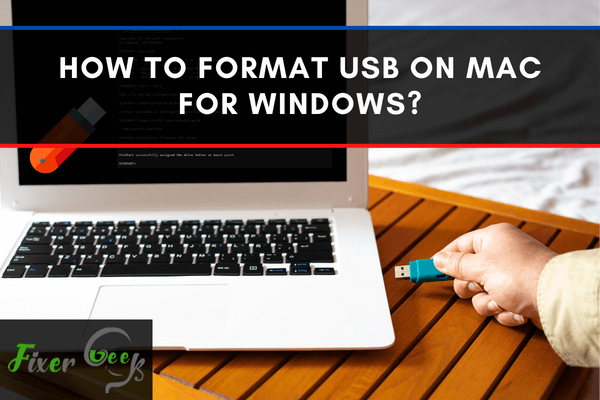
Ever had any trouble transferring files using a thumb drive? If you usually transfer files between Mac devices only, then you were probably ok. But things are different when we are talking about copying files from or into a windows device.
The disk formats or file systems supported by Windows and Mac are different. You will often be scratching your head when you find your usb stick not working that was working just fine before. Don’t worry; you are not alone.
In this article, you will learn to format your usb drive to make it work on both Mac and Windows. But, before we get started, you will need some knowledge of different disk formats.
What file systems are supported by Mac?
An usb drive required to work on a Mac supports the following disk formats:
- Mac OS Extended (HFS+)
- APFS
- MS-DOS (FAT)
- exFAT
The APFS and Mac os Extended file systems are exclusive to Mac only. Therefore, any usb drive formatted with these will not be readable by a Windows device.
What file systems are supported by Windows?
Windows can read and write in the following file systems:
- NTFS
- FAT32
- exFAT
All three of these file systems were developed by Microsoft. FAT32 and exFAT formatted usb drives will work on almost any platform. But some platforms, including Mac, do not support NTFS volumes. NTFS is mainly used by Windows machines. You can read NTFS formatted usb drives on a Mac, but you can’t write in them.

Which file format should I use?
If you want a usb drive that would work on both Mac and Windows, then the FAT32 and exFAT would be the best choice. However, FAT32 has more limitations compared to exFAT. FAT32 cannot store any particular file that is larger than 4GB. Moreover, a FAT32 partition can’t be more than 8TB.
If a FAT32 file system meets your file sharing demands, then you can go for it. Otherwise, you have to use the exFAT file system. It doesn’t have any limitations like the FAT32, and it will support both Mac and Windows.
So, we will show you how to format your pen drive in exFAT so that it works in both operating systems.
Formatting the usb flash drive in exFAT
- First, search for the “Disk Utility” tool using spotlight search.
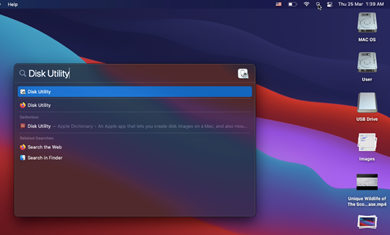
- Select your usb drive from the disk utility external drive list. It will show you the properties of your usb drive.
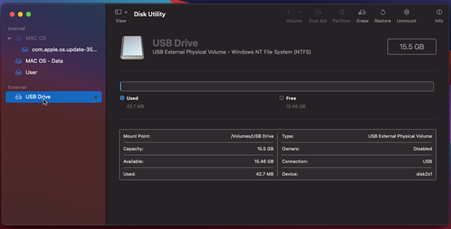
- Now click on the “Erase” option from the top right of the disk utility window.
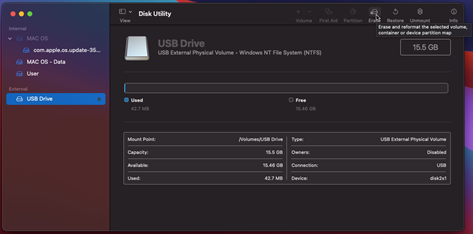
- Now, you will see a prompt Erase “Your_usb_name”. Click on Format and select exFAT from the list.
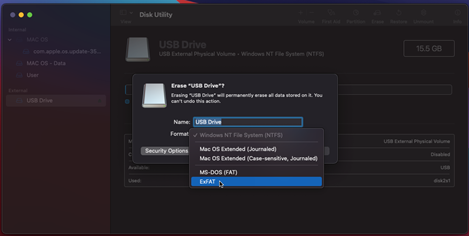
- Then, click on the “Erase” option to start formatting your usb in exFAT file system.
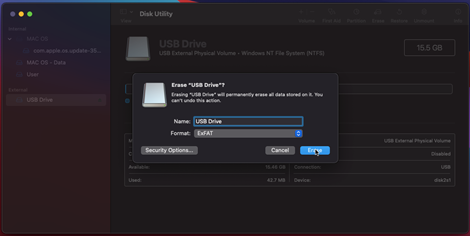
- Finally, you will see that your usb drive’s format has been changed to exFAT. Now, you can use it on both Mac and Windows.
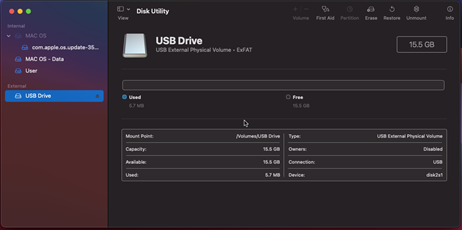
What else to keep in mind?
- Some portable media and old devices may not support the exFAT format. So, outside of Mac and Windows, if you come across a device where your usb is not recognized, you may have to reformat it in FAT32.
- exFAT has some advantages over FAT32. But it also has disadvantages compared to NTFS, HFS+, APFS. exFAT offers superior flexibility over others, but it is unable to perform some actions. So, you may have to reformat into one of Microsoft or Apple’s native file formats when you want to do certain tasks like creating a bootable disk.
Summary: Format usb on Mac for Windows
- launch disk utility
- Select usb disk in disk utility
- Select partition tab
- Select 1 partition from scheme drop down
- Name volume and choose ms-dos for format
- Click apply to format usb on Mac for Windows